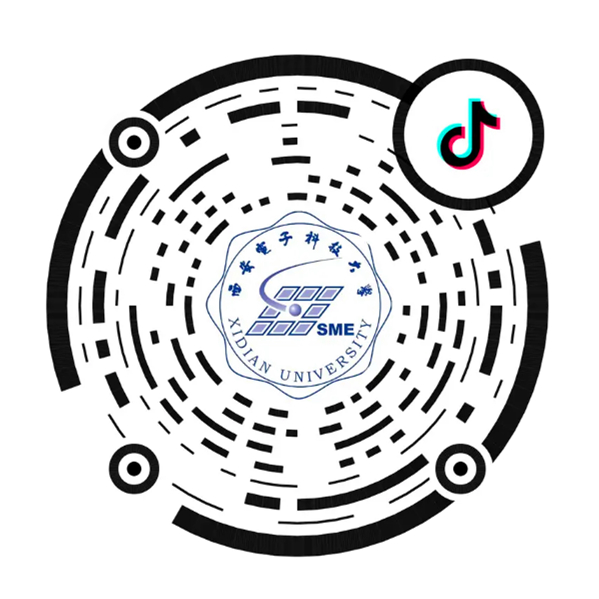关于开展2020年MIT“电子工程与纳米系统设计”寒假短期交流项目的通知
日期:2019-10-14 12:33 点击量:
为进一步促进我校一流建设和发展,培养一批具有自主创新能力和国际学术视野的拔尖创新人才,根据我校“国际化牵引行动”计划的部署,beat365拟于2020年推出MIT“电子工程与纳米系统设计”寒假短期交流项目,资助优秀学生赴世界顶尖大学交流。项目详情如下:
一、项目院校
麻省理工学院(Massachusetts Institute of Technology)是世界著名私立研究型大学,截止至2018年10月,麻省理工学院的校友、教职工及研究人员中,共产生了93位诺贝尔奖得主、8位菲尔兹奖得主以及25位图灵奖得主。MIT素以顶尖的工程学和计算机科学而著名,拥有众多顶级实验室,位列2016-17年世界大学学术排名(ARWU)工程学世界第一、计算机科学第二 ,被称为工程科技界的学术领袖。
电气工程和计算机科学学部(Electronic Engineering & Computer Science)是麻省理工学院最重要的学部之一,共有80多位美国国家工程院院士、美国国家科学院院士在EECS学部学习或执教。
二、项目规模与时间
项目规模:拟资助30名学生。
项目时间:2020年1月18日-2月1日(以上项目日期均为北京时间,包含从国际航班起飞至抵达国内全程15天)。
补充说明:如项目最终未能成团,则自动取消行程。
三、项目内容
课程目标是了解纳米技术的历史、设计和生产及其在电子工程中的先进应用。课程第一部分为发展历程概论,从早期的真空管开始至纳米尺度的集成电路。课程第二部分,将对研究人员在过去不同时期面对相同问题时,采用的不同研究方法进行分析,随着制造精度的提高和对材料科学认识的提高,涉及新材料和设计架构的研究有可能推动计算领域的革新。课程第三部分将深入探讨纳米电子技术在多个电子工程领域的应用,例如超级计算、物联网、5G和机器学习等。
项目由学术模块和探索模块组成。学术模块共计50个课时,其中核心教学部分24个课时及实践部分26个课时,核心教学部分以教授及助教的专业课为主,实践部分包括学术项目10课时、小组讨论、作业和展示12课时、核心实验室/机构探访4课时。探索模块由文化探访、Fellowship及主题Panel组成。
项目详细介绍及日程安排参见附件2。
四、核心课程
Module 1: Electronic Engineering: From Vacuum Tubes to Today
Background of electronic engineering, devices, hardware, evolution to solid-state electronics. Going over key metrics by which to analysis electronic systems, which will act as the core of all of the subsequent modules.
Module 2: Nanosystems
●Nanoelectronic Systems: Foundations
Connect single devices up to complete system-level performance metrics. Understand how computer performance is dictated by the devices and hardware (and calculate key metrics), and how devices parameters can be optimized for different computing applications.
●Nanoelectronic Systems: State-of-the-Art Today and Next Steps
Uderstand the evolution of devices from the first transistors to state-of-the-art devices today, and what has driven these changes.
●Nanoelectronic Systems: Advanced Concepts
Delve deeper into advanced concepts in nanoelectronics, exploring emerging nanotechnologies like one- dimensional and two-dimensional nanomaterials, quantum computing, etc.
●Nanoelectronic fabrication:
Understand nanofabrication techniques and processes for fabricating state-of-the-art electronic systems. Go over new innovations in the field, and what innovations are required to develop the next generation of nanoelectronics systems.
●Nanoelectronic design:
In addition to building systems, we must be able to design them. This module covers the full end-to-end design flow of how hardware is designed: from low-level device compact models up to full system synthesis using industry-standard design flows.
Module 3: Nanosystems Applications in Electronic Engineering
●Application I: High-Performance Computing
For our first application, apply what we have learnt to the field of high-performance computing. Understand how supercomputers are made, what their requirements are, and what state-of-the-art in supercomputing looks like today and challenges moving ahead.
●Application II: Internet-of-Everything/ Ultra-Low-Power Embedded Systems:
For our second application, apply what we have learnt to the opposite field of supercomputing: ultra-low- power embedded systems. Look at applications ranging from remote sensing nodes to implantable electronics, and compare, contrast, and optimize vs. supercomputers from Module 7.
●Application III: Telecommunications:
For our third application, apply what we have learnt to the broad and rapidly growing field of telecommunications. Covers and integrates topics ranging from antennas and RFIDs to radar systems to next generation 5G.
●Application IV: Machine Learning
For our last application, delve into the exciting world of machine learning. Explore novel hardware for machine learning, including neuromorphic chips, machine learning accelerators, and cutting-edge research at the intersection of hardware and machine learning/ artificial intelligence.
五、课程教学团队
1. Anantha P. Chandrakasan
Dean of MIT’s School of Engineering
The Vannevar Bush Professor of Electrical Engineering and Computer Science.
Fellow of National Academy of Engineering
Head of the MIT EECS Department
2. Max Shulaker
Emmanuel E Landsman (1958) Career Development Assistant Professor of Electrical Engineering & Computer Science, MIT
Leader of Novels Group at MIT
Research Interests: carbon nanotube-based transistors and circuits, nanotechnologies and nanodevices, new system architectures directly enabled by new nanotechnologies
3. Gage Hills
Received Ph.D. degree in Electrical Engineering from Stanford University 2018
Currently a Postdoctoral Researcher at MIT
Research Interests: the development of very-large-scale integrated circuits using nanotechnologies, such as carbon nanotube field-effect transistors, nanosystems design
4. Mindy Bishop
Ph.D student in the Harvard/MIT Medical Engineering and Medical Physics (MEMP) program
Undergraduate degree from UC Berkeley in Bioengineering and Materials Science and Engineering
Research Interests: nanoparticle behavior in vivo for early cancer diagnostics with Magnetic Particle Imaging, nanosystems manufacturing
六、项目特色
1. 课程由麻省理工学院电气工程与计算机科学学部核心实验室(Microsystems Technology Laboratories)主办,Prof. Max Shulaker和他的教学团队成员设计,该团队分别于2017年和2019年在《Nature》杂志发表文章。
2. 课程计划:Pre-learning(4周)+ On-campus Course(2周)+ Post-learning(4周)。共计10周课程学习计划,包含出发美国前4周Pre-learning,2周在MIT的学习,以及课程结束后4周的Post-learning。4周Pre-learning将以在线学习的形式开展,包括预习资料、课程教学计划、日程安排及小组作业等相关资料,提前让学生了解课程信息,并提交预习阶段相关个人作业。课程结束后,将持续为学生提供后续咨询、申请等服务,包括但不限于助理研究员申请、长期项目跟进等。
3. 按照授课要求完成规定学习及考核内容将获得课程官方证书和成绩单;项目中表现优异者将有机会获得授课教授的推荐信。
4. 本项目所有学生入住公寓(或酒店),两人一间标准;期间可使用学院餐厅、图书馆、自习室等公共设施。
七、项目要求与选拔标准
1.beat365本科大二至大四在校生、研究生在校生;
2.具备良好英语基础,能适应全英文授课,同等条件下,优先选拔通过CET-6以及具有雅思/托福/GRE成绩的同学;
3.以学业成绩专业排名等为基本选拔排序依据;
4.身心健康、有较强的独立生活、学习和环境适应能力,对国外访学有充分的认识和思想准备;
5.热爱祖国,遵纪守法,自觉维护国家形象和学校名誉,严格按照学校规定的时间派出及返校,富有团队合作精神;
6.符合以上条件,同等条件下,优秀学生干部优先考虑;
7.初选通过后由学院组织面试,并确定最终录取名单,具体选拔方案参照《beat365出国(境)项目学生选拔办法(试行)》执行。
八、项目费用及资助
1.项目费用:39600人民币/人
项目费包含:(1)项目课程费用、项目实验室实验器械及材料费用、学习资料费用;(2)项目期间住宿费用;(3)餐饮费用(包含每日早餐、部分午餐以及一顿正式晚餐);(4)在美交通(波士顿的接送机费用、在美期间的公共交通费用);(5)参观及探访(观看当地体育比赛的费用、参观波士顿当地其他学校、博物馆等的门票等);(6)国际保险费用;(8)美国签证申请协助(包括项目主办方为学生办理邀请函、签证用行程单等资料、面签培训指导等,此项为项目整体服务的一部分,已有美签的不单独退还)。
项目费不包含:(1)往返机票费用;(2)向美国使领馆支付的个人美国签证申请费用;(3)银行国际电汇手续费;(4)个人其他花费。
2. 项目资助:本项目采取后资助的形式,学院将在报名学生中择优选派30名优秀学生每人资助5000元人民币。申请通过后,学生需先行支付项目所需费用。待项目结束后,参加项目的学生向学院提交访学报告,综合项目实施过程中实际表现评定最终资助额度经学校相关部门审核后,以奖学金的形式将资助费用发放到学生个人账户。
3. 其他:如学生随团出访期间有私自外出、明显不利于国家和学校名誉等行为,资助评定过程中将视情况核减500元至1000元资助额度。
九、申请流程
1. 报名申请:符合条件并有意申请MIT项目的同学,须认真准备下列材料,
并通过报名链接提交(https://jinshuju.net/f/ALsP0z):
(1) 2020寒假MIT访学项目申请表(附件1);
(2) 英语语言成绩单扫描件(CET4/6,TOEFL,IELTS,GRE等);
(3) 学业成绩单(教务系统截屏亦可);
(4) 其他相关证明材料。
个人申请信息务必保证真实有效,如发现信息不实,将直接取消申请资格。
2.学院审核:学院对学生报名材料真实性进行审查,综合语言和学业成绩择优确定项目学生名单。(重要提示:请同学与家长商量后,认真报名,涉及预定团体票、项目报名相关,原则上报名后选拔通过不得退出。)
3.护照办理:项目方将在报名截止后统一组织签证办理,已有护照的同学,在报名申请时,“申请汇总表”备注信息一栏填写已有护照(有效期2020年9月1日以后);尚未办理护照的同学,请于10月25日前赴公安局出入境管理处办理护照。
十、报名截止日期
2019年10月19日18:00。10月18日19:00在南校区E楼3区307开展项目宣讲会。
十一、项目咨询
1. 加入微院2020寒假访学QQ群:877030355
2. 联系人:北校区办公楼110 高老师 电话:88202505分机号604
 |
附件1:2020寒假MIT访学项目申请表 |
 |
附件2:电子工程与纳米系统设计课程简介与日程安排 |



